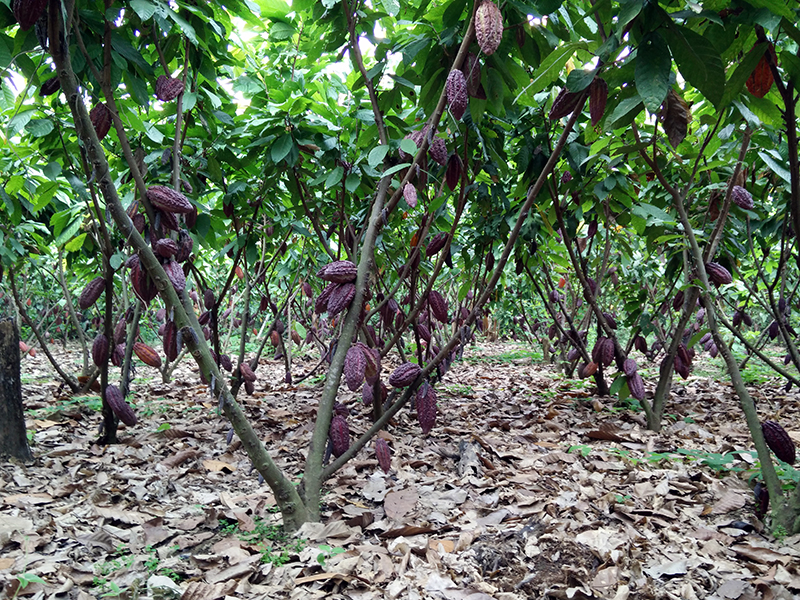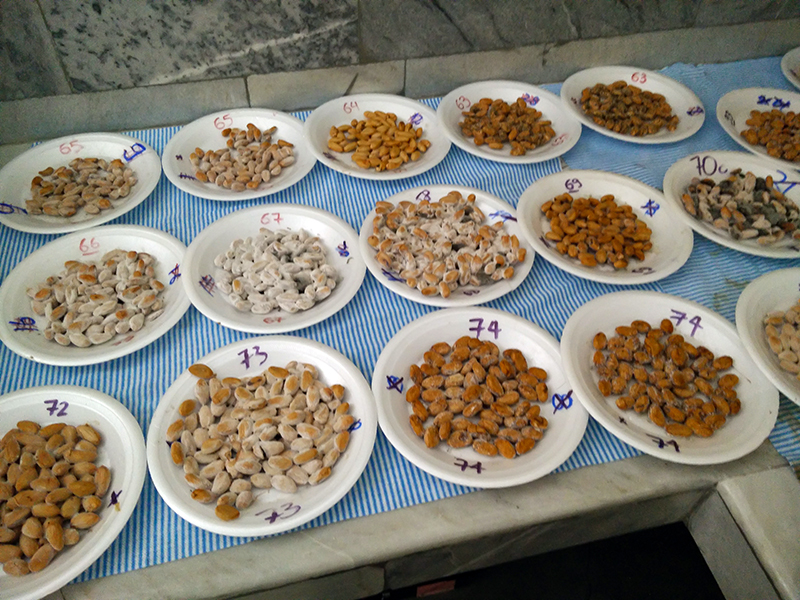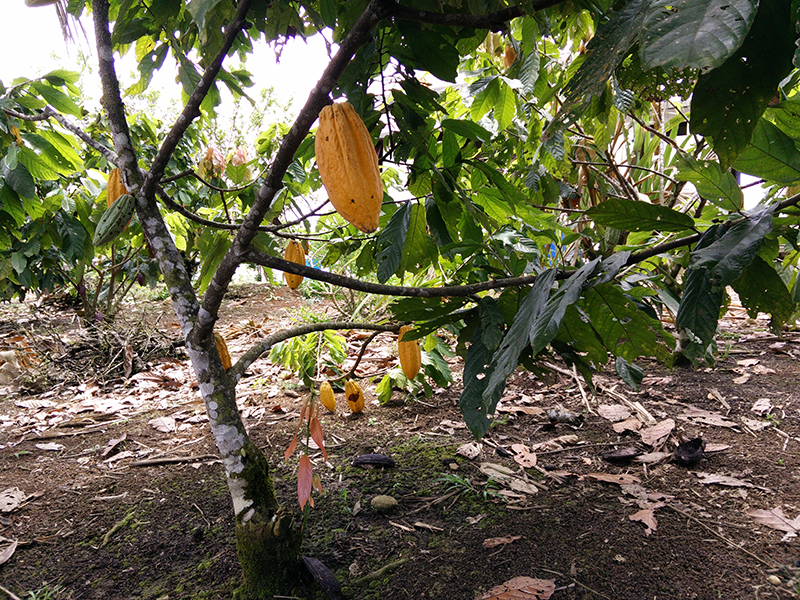Reducing cadmium levels in cacao
October 5, 2020 - Kaine Korzekwa
Chocolate is almost universally adored. But few know the complicated process of how cacao beans become chocolate. Did you know cacao tree farming is done mostly by small-scale low-income farmers in Latin America, particularly in countries like Ecuador?

In an additional layer of complexity, soils in these areas are naturally higher in the element cadmium. It’s an element that can accumulate in the human body and cause harm. David Argüello and a team of researchers in Ecuador and Belgium set out to find ways to lower how much cadmium from the soil gets into the cacao trees.
“The cadmium issue threatens the livelihood of farmers because their products may not be suitable for trade and some buyers would prefer not to buy polluted cacao beans,” Argüello explains. “In order to find an effective mitigation strategy, we have to understand how cacao plants takes up the element.”
Traditionally in science, researchers would look at studies of other crops to see what works to prevent cadmium uptake. Something commonly added to the soil to help with this issue is lime, a compound derived from limestone. This changes the cadmium chemically so that it’s not as likely to be absorbed by the crops.
However, most crops like corn or sunflowers are replanted each year. This allows the lime to be mixed deep into the soil between crop seasons. Cacao plants, on the other hand, are trees that live for many years. It’s not possible to put lime into much of the soil without disturbing the roots of cacao. Farmers can only apply lime to the surface.

“I think people underestimate the importance of searching for a strategy that effectively reduces cadmium uptake in cacao,” Argüello says. “This crop is very different than other conventional plants. The information available for its management is scarce and outdated. Many farmers get the advice that adding lime will solve the issue. But we wanted to investigate this.”
The research team used an experiment where they planted cacao seedlings in pots in a greenhouse. This allowed them to add lime to the topsoil and subsoil and then test the cacao leaves for cadmium levels. While they acknowledge the experiment would not be possible in the field, it’s valuable to understand how the plants and their roots respond.
Their findings show that adding lime to both layers decreased cadmium in the cacao leaves, which was not surprising. They also found that liming only the top layer also decreased cadmium. However, they discovered that when only the top layer is limed, more cadmium is taken up from roots in the bottom layer. This means that researchers and farmers cannot ignore high cadmium levels deep in soils.
“Other nutrients, such as zinc, are chemically similar to cadmium,” Argüello says. “We hypothesize that the reduction of the availability of those nutrients in the top layer due to liming causes the roots in the bottom layer to compensate. During that process, zinc uptake increases but some undesired cadmium is also taken up as a mistake."

The researchers say their findings have helped scientists understand how cacao plants behave and can possibly chart a path to finding an effective reduction strategy. Argüello hopes their work can help small cacao farmers sell their products.
“I am from Ecuador and cacao is the most traditional export commodity for my country,” he says. “Every time I travel and find a bar of chocolate produced in Ecuador, I feel happy and proud. I like to think that my work will help small cacao farmers sell their products and help my country to continue to be recognized worldwide.”
Read more about this work in the Journal of Environmental Quality, a publication of the American Society of Agronomy, Crop Science Society of America and Soil Science Society of America. This work was funded was by the Belgian VLIR-UOS program with the project “Food Standards for the Sustainability of The Cocoa Supply Chain.”
